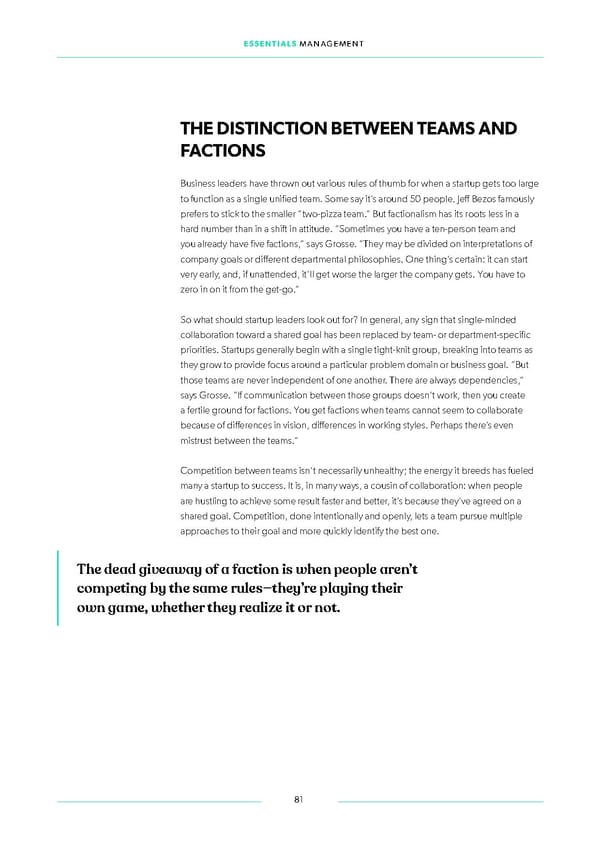ESSENTIALS MANAGEMENT THE DISTINCTION BETWEEN TEAMS AND FACTIONS Business leaders have thrown out various rules of thumb for when a startup gets too large to function as a single uniifed team. Some say it’s around 50 people. Jeff Bezos famously prefers to stick to the smaller “two-pizza team.” But factionalism has its roots less in a hard number than in a shitf in attitude. “Sometimes you have a ten-person team and you already have ifve factions,” says Grosse. “They may be divided on interpretations of company goals or different departmental philosophies. One thing’s certain: it can start very early, and, if unattended, it’ll get worse the larger the company gets. You have to zero in on it from the get-go.” So what should startup leaders look out for? In general, any sign that single-minded collaboration toward a shared goal has been replaced by team- or department-speciifc priorities. Startups generally begin with a single tight-knit group, breaking into teams as they grow to provide focus around a particular problem domain or business goal. “But those teams are never independent of one another. There are always dependencies,” says Grosse. “If communication between those groups doesn’t work, then you create a fertile ground for factions. You get factions when teams cannot seem to collaborate because of differences in vision, differences in working styles. Perhaps there’s even mistrust between the teams.” Competition between teams isn’t necessarily unhealthy; the energy it breeds has fueled many a startup to success. It is, in many ways, a cousin of collaboration: when people are hustling to achieve some result faster and better, it’s because they’ve agreed on a shared goal. Competition, done intentionally and openly, lets a team pursue multiple approaches to their goal and more quickly identify the best one. The dead giveaway of a faction is when people aren’t competing by the same rules—they’re playing their own game, whether they realize it or not. 81
 Essentials Management First Round Capital Page 80 Page 82
Essentials Management First Round Capital Page 80 Page 82